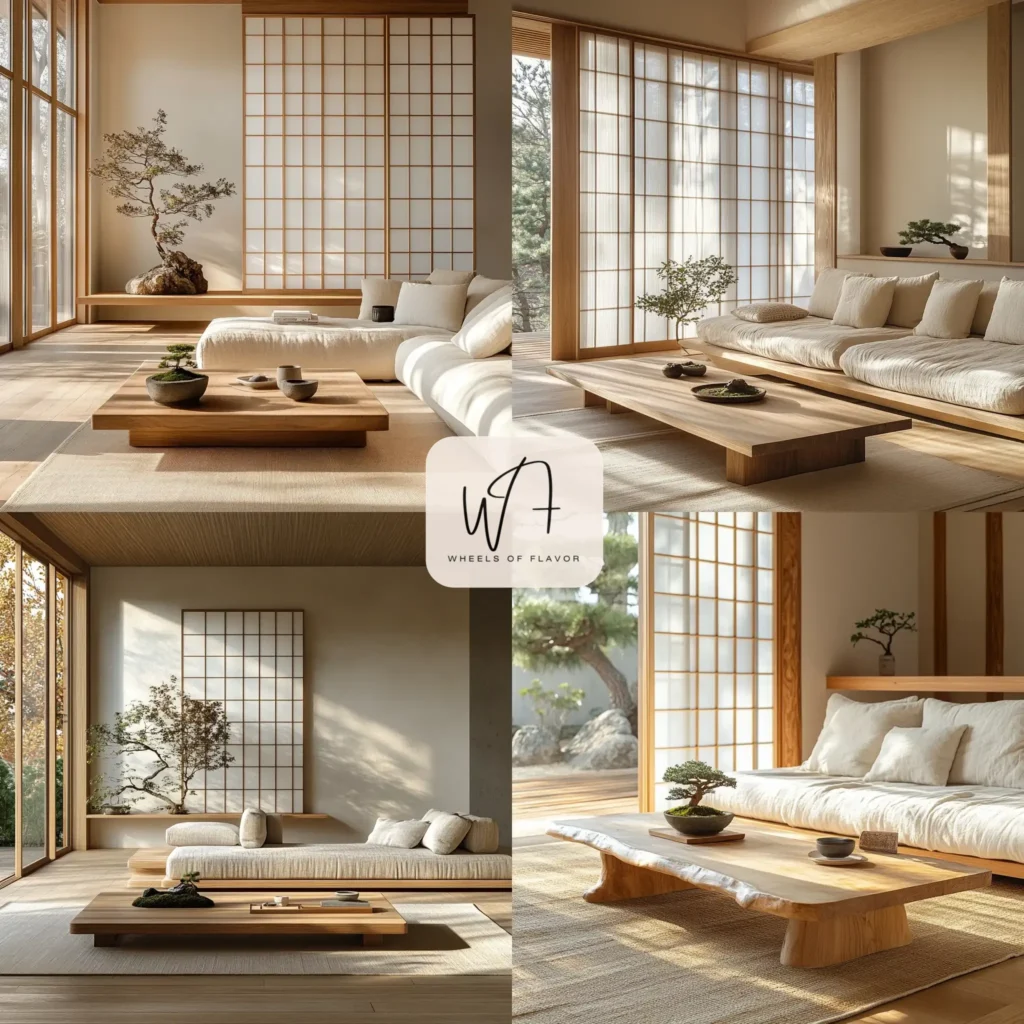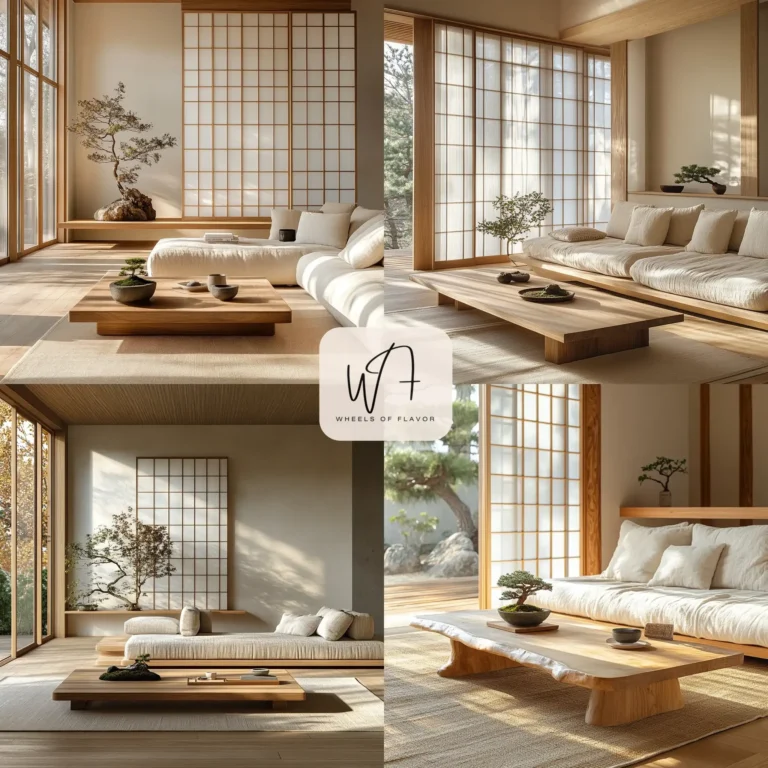Japanese mid century modern design is a captivating blend of minimalist aesthetics, natural materials, and functional elegance that continues to inspire homeowners and designers alike. Emerging in the post-World War II era, this style marries the clean lines of mid-century modern design with the serene, nature-inspired principles of traditional Japanese aesthetics. The result is a timeless, harmonious look that feels both sophisticated and tranquil. In this article, we’ll explore 11 stunning ideas to incorporate Japanese mid century modern design into your home, offering practical tips to create a space that’s both stylish and serene.
What Is Japanese Mid Century Modern Design?
Japanese mid century modern design combines the sleek, functional forms of mid-century modern style—popular in the 1940s to 1960s—with the simplicity and Zen-inspired tranquility of Japanese design. This fusion emphasizes open spaces, natural light, and organic materials like wood and stone, creating environments that feel calm yet contemporary. Designers like Isamu Noguchi and George Nakashima played pivotal roles in shaping this aesthetic, blending Japanese craftsmanship with modernist principles. The style prioritizes quality over quantity, with every piece in a room serving a purpose while contributing to the overall harmony.
Why Choose Japanese Mid Century Modern Design?
This design philosophy resonates with those seeking a clutter-free, intentional living space. It’s perfect for urban dwellers who want to create a peaceful retreat amidst busy lifestyles. By focusing on natural textures, neutral tones, and multifunctional furniture, Japanese mid century modern design offers a versatile aesthetic that works in both small apartments and spacious homes. Ready to bring this style into your space? Here are 11 ideas to get started.
- Embrace Minimalist Furniture
At the heart of Japanese mid century modern design is minimalist furniture with clean lines and functional forms. Opt for low-profile pieces like a sleek wooden sofa with tapered legs or a low coffee table inspired by Isamu Noguchi’s iconic designs. These pieces create an open, airy feel while maintaining a strong connection to nature through materials like walnut or teak.
- Incorporate Natural Materials
Natural materials are a cornerstone of Japanese mid century modern design. Use wood, bamboo, or stone in furniture, flooring, or accents. For example, a teak dining table with a smooth, matte finish or bamboo blinds can add warmth and texture to your space. These materials not only look beautiful but also age gracefully, enhancing the timeless appeal of your decor.
- Use a Neutral Color Palette
Japanese mid century modern design favors muted, earthy tones like beige, cream, gray, and soft browns. These colors create a calming atmosphere and allow the textures of materials to stand out. Add subtle pops of color—like deep indigo or muted green—inspired by traditional Japanese textiles for a touch of vibrancy without overwhelming the space.
- Prioritize Open Space and Flow
This design style thrives on open, uncluttered spaces that promote a sense of calm. Arrange furniture to encourage flow and avoid overcrowding. For instance, place a low sofa against a wall to open up the center of the room, or use sliding shoji screens to create flexible, open partitions that echo traditional Japanese architecture.
- Add Shoji Screens for Versatility
Shoji screens, with their translucent rice paper and wooden frames, are a hallmark of Japanese design. They allow light to filter through while maintaining privacy, making them perfect for dividing spaces in a small apartment or adding a decorative element to a room. Choose screens with simple, geometric patterns to align with mid-century modern aesthetics.
- Integrate Indoor Plants
Bringing nature indoors is a key principle of Japanese mid century modern design. Incorporate plants like bonsai, bamboo, or monstera to add greenery and life to your space. Place them in simple ceramic pots or wooden planters to maintain the minimalist vibe. Plants not only enhance the aesthetic but also improve air quality and promote tranquility.

- Focus on Functional Decor
Every piece in a Japanese mid century modern design should serve a purpose. Choose decor that doubles as storage, like a sleek wooden bench with hidden compartments or a minimalist shelving unit. This approach keeps your space tidy while maintaining the aesthetic’s clean, intentional look.
- Highlight Craftsmanship
Japanese mid century modern design celebrates handcrafted quality. Invest in pieces that showcase skilled craftsmanship, such as a hand-carved wooden chair or a ceramic vase with subtle imperfections. These items add character and authenticity, reflecting the style’s appreciation for artisanal work.
- Use Low-Profile Lighting
Lighting in Japanese mid century modern design is soft and diffused, creating a warm, inviting glow. Opt for low-profile fixtures like Noguchi’s Akari paper lanterns, which combine lightweight rice paper with minimalist wooden or metal frames. These lamps cast a gentle light that enhances the serene atmosphere of your space.
- Blend Textures Thoughtfully
Texture plays a crucial role in Japanese mid century modern design. Combine smooth wood with soft textiles like linen or cotton for a balanced look. For example, pair a polished teak table with a woven jute rug to add depth and warmth without cluttering the space.
- Create a Zen-Inspired Corner
Dedicate a corner of your home to a Zen-inspired space for relaxation or meditation. Include a low cushion, a small wooden table, and a single piece of decor, like a ceramic incense holder. This space embodies the calming essence of Japanese mid century modern design, offering a retreat from daily stress.
How to Maintain the Aesthetic Over Time
To keep your Japanese mid century modern design looking fresh, regularly declutter your space and focus on quality over quantity when adding new pieces. Stick to the principles of simplicity and functionality, and choose items that align with the style’s natural, minimalist ethos. For more inspiration on home decor trends, check out our Styles and Trends section for ideas on blending aesthetics.
External Resource for Further Reading
For a deeper dive into mid-century modern influences, visit Houzz’s guide to mid-century modern design. This comprehensive resource explores the history and key elements of the style, offering additional inspiration for your home.
FAQs About Japanese Mid Century Modern Design
What defines Japanese mid century modern design?
Japanese mid century modern design blends the clean lines and functionality of mid-century modern style with the minimalist, nature-inspired aesthetics of traditional Japanese design. It emphasizes natural materials, neutral colors, and open spaces.
How can I incorporate Japanese mid century modern design in a small space?
Focus on low-profile furniture, multifunctional pieces, and a neutral color palette. Use shoji screens to create flexible partitions and add plants for a touch of nature without overwhelming the space.
What materials are best for Japanese mid century modern design?
Wood (like teak or walnut), bamboo, stone, and natural textiles like linen or cotton are ideal. These materials add warmth and texture while maintaining the style’s minimalist aesthetic.
Where can I find authentic Japanese mid century modern furniture?
Look for pieces by designers like Isamu Noguchi or George Nakashima at reputable retailers or vintage stores. Online platforms like 1stDibs or local antique shops often carry authentic mid-century modern furniture.

